

Mens football makes history, winning their 24th Yates Cup
‘Blessed to be on the field with my brothers,’ Yates Cup
MVP Justin Pace says
Noah Cyr
Assistant Sports Editor
“Your Queen’s Gaels are golden once more,” exclaimed Queen’s football announcer Jesse Bell on the CFRC broadcast, as Queen’s football sealed the championship.
On Nov. 8, Queen’s Football won their 24th Yates Cup—and their first since 2009—taking home the OUA championship after defeating the No.1 ranked Laurier Golden Hawks, 30-27. The game at Laurier’s University Stadium saw Queen’s embrace the underdog role against the defending champions, seeking redemption after an earlier loss to the Golden Hawks in their third Yates Cup appearance in five years.
The Gaels got off to a fast start, with an intercepted pass on the first drive of the game courtesy of Jacob Baldwin, ArtSci ’28, his first of two in the game. The interception led to good field position, allowing Alex Vreeken, Kin ’26, to send a touchdown pass to Cedric Smith, ArtSci ’26, for a quick 7-0 lead.
On the subsequent drive, the Queen’s defence again forced a turnover, courtesy of a forced

fumble by Jared Siewe, ArtSci ’26, recovered by Justin Pace, ArtSci ’26. The turnover led to a 35-yard field goal by Tyler Mullan, ArtSci ’26 and a 10-0 lead, 7 minutes into the game. Laurier would get on the board with a field goal of their own late in the quarter to cut the deficit to 10-3.
The second quarter began
19-year-old left in critical condition following a hit and run steps from campus
Incident sparks conversation of pedestrian safety in the student district
Jonathan Reilly
Senior News Editor
Following a hit-and-run that left a young individual in critical condition, students are speaking out about their experiences walking near campus.
Announced in a release from the Kingston police, a 19-year-old pedestrian was struck by a vehicle in a hit-and-run on Johnson St. near Albert St. on Nov. 7 at around 9 p.m. The victim was left in “critical condition” and transported to Kingston General Hospital following the incident, with the release adding that debris left at the scene suggested the driver was in a white Toyota Tundra.
“Thanks to a member of the community who saw the Kingston Police media release, the suspect vehicle in relation to this incident was recovered on November 10th,
Lilly Meechan: Queen’s honours the one year passing of Chancellor Emeritus Murray Sinclair

2025. The vehicle was located abandoned along the side of a country road immediately off Perth Road in the area of Bedford Mills,” the police wrote in an updated statement to The Journal on Nov. 11.
“The victim suffered major injuries, internal and otherwise.
Although their condition has stabilized, they have endured surgeries and will continue to be hospitalized,” the Kingston Police added.
The incident quickly prompted a community response, with multiple news outlets reporting on the incident, along with the AMS and its affiliated Instagram accounts also making several story posts.
“Our thoughts are with everyone who witnessed or was affected by the incident. When something like this occurs near campus, students turn to their student government to confirm what happened and to
with a couple of long drives that both teams that didn’t lead to any points. Queen’s would add to their lead with a 46-yard field goal from Mullan just after the 4-minute mark.
On the subsequent Laurier drives, the turnover parade continued, with not one, but two interceptions that lead to points. Baldwin caught his second interception to set up a Vreeken rushing touchdown, and Pace took an interception home for a pick six to take a commanding 27-3 lead going into the half.
Laurier would respond in the third quarter with a touchdown on their first offensive drive to cut the lead to 27-10. After both teams traded field goals and a couple of long drives, Queen’s led 30-13 with 15 minutes remaining in the Yates Cup.
share safety information quickly,” AMS President Jana Amer wrote in a statement to The Journal
Residents in the area also shared their perspectives with The Journal, explaining their thoughts on the safety of the road itself.
“It’s a pretty fast-paced road we live on here, and a lot of students, you see all the time, walk across the road while there are cars coming,” Ben Miller, ArtSci ’27 said. “It’s unfortunate, and not something that I necessarily saw happening, but it’s not something that I don’t understand happening here, given the nature of the road.”
This feeling was shared by other students, who added that this wasn’t something they saw coming, explaining the shock they felt when they heard about the incident.
“I heard about it the next day, and honestly, at first, I was a little


The fourth quarter showed why Laurier was ranked number one in the country, as they came up with two methodical drives down the field to cut the lead to 30-27 with 2:55 left in the game. After a big stop by the Laurier defence, they earned a chance to potentially tie or take the lead, getting the ball with 2:01 on the clock.
Instead, the Queens defence came up big, stopping the streaking Laurier defence and setting up Queens to ice the game.
It was an emotional scene as clock ran out, coaches and player alike embracing each other for a victory that hasn’t happened in a Queen’s uniform since 2009. During the post-game ceremonies, Pace received the Dalt White Trophy for being the Yates Cup Player of
taken aback that something like that can happen just any time of the day, right in front of our house,” local resident Morgan Say said. “Especially so near campus, too and on such a big road,” her roommate, Isabelle Ruus, ArtSci ’27, added.
They also spoke about a previous incident that they feel speaks to the overall safety of the road, with multiple residents agreeing that, despite the speed limit being 50 km/h, most drivers far exceed that.
“Even last week, there was an Uber driver that came the wrong way—this [Johnson St.] is a oneway street, but I saw a guy who came this [the opposite direction] way—and he just stopped there. I don’t think it’s [the street rules] are very regulated,” Ruus said.
Another resident, Aliya Willinger, ArtSci ’27, even described a nearmiss she witnessed at Alfred St. and

the Game—having a game-high of 12 total tackles, a stat he shares with teammate Siewe, as well as having a fumble recovery and an interception touchdown. The Queen’s defence combined for five turnovers in the game.
In a media availability ahead of the U Sports semifinal, Head Coach Steve Snyder reflected on the amazing season his team has built, saying, “We’ve improved each week, and I’m proud of the way we’ve stayed focused and stayed steady to get us to this point.”
The Gaels will travel to Saskatoon, SK., to take on the University of Saskatchewan Huskies in the Mitchell Bowl—U Sports’ semifinal between the champions of OUA and Canada West—on Nov. 15 at 3:15 p.m., ET.
Johnson St. early Monday morning while walking to an 8:30 a.m. class. She said the roads were in rough condition, and as she and a friend stepped out of the house, they saw a girl begin to cross just as the light turned yellow.
“There was a girl walking with her hood on, and she started walking as the light had just turned yellow, but this car started flying through the intersection,” Willinger said. “[The driver was] was slamming on the horn but didn’t slow down and stopped inches away from her.”
Willinger explained that the girl, who had her hood up and her head down, seemed unaware of how close the car came.
Continued online at www.queensjournal.ca
POSTSCRIPT - PAGE

Eva Sheahan: Thurst into the world of familial caretaking, youth are driven to grow up almost overnight
Maya Galvin: ‘Vogue’s’ boyfriend article had the potential to be feminist but it missed the mark
Marijka Vernooy: Queen’s Players take audiences on a comedy odyssey in new show
Madeleine Hamilton: University isn’t a competition, even if it feels like one
The Gaels’ first Yates Cup since 2009. GRAPHIC BY SARAH ADAMS AND JULIA LUDDEN
Marking Sinclair’s
NEWS Queen’s honours the one-year passing of Chancellor Emeritus Murray Sinclair
passing, Queen’s community reflects on the life and impact of the late Chancellor
Lilly Meechan Assistant News Editor
Chancellor Emeritus Murray Sinclair, Queen’s first Indigenous Chancellor and former Special Advisor on Reconciliation, is set to be publicly honoured one year after his death.
Sinclair served as the 15th Chancellor Emeritus and
Special Advisor to the Principal on Reconciliation at Queen’s University between 2021-24.
Sinclair was an Anishinaabe leader, a former Canadian Senator, a lawyer, and served as Manitoba’s first Indigenous judge between 1988 and 2009. A year after his passing at age 73 on Nov. 4, 2024, Queen’s is honouring and remembering his legacy.
In a statement to The Journal, Principal and Vice-Chancellor
Patrick Deane reflected on the influence Sinclair had, sharing that Sinclair understood his deep responsibilities to Queen’s as chancellor, and despite health
issues, was rigorously committed to the role.
“Chancellor Sinclair had an enormous impact on the University,” Deane said. “[He went] to considerable trouble to make videos for convocation in order to share his wisdom with graduands, and he was generally extremely generous with his time with faculty and students.”
“He understood profoundly what influence his position as Chancellor of Queen’s could have on the education landscape in Canada, and he was active with fellow chancellors.”
Principal Patrick Deane reflected on Sinclair’s belief that
education must play a central role in reconciliation, given its place in Canada’s residential school history.
“He’s famous for his observation to the effect that education (the residential schools) plunged the country into a human and moral crisis, so education will have a key role to play in reconciliation, or the remediation of that crisis over time.”
Sinclair, who chaired the Truth and Reconciliation Commission of Canada was Queen’s first Indigenous Chancellor. Principal Deane described his appointment as a sign of Sinclair’s faith in Queen’s and confidence in its commitment to reckoning with its colonial history and making efforts for reconciliation.
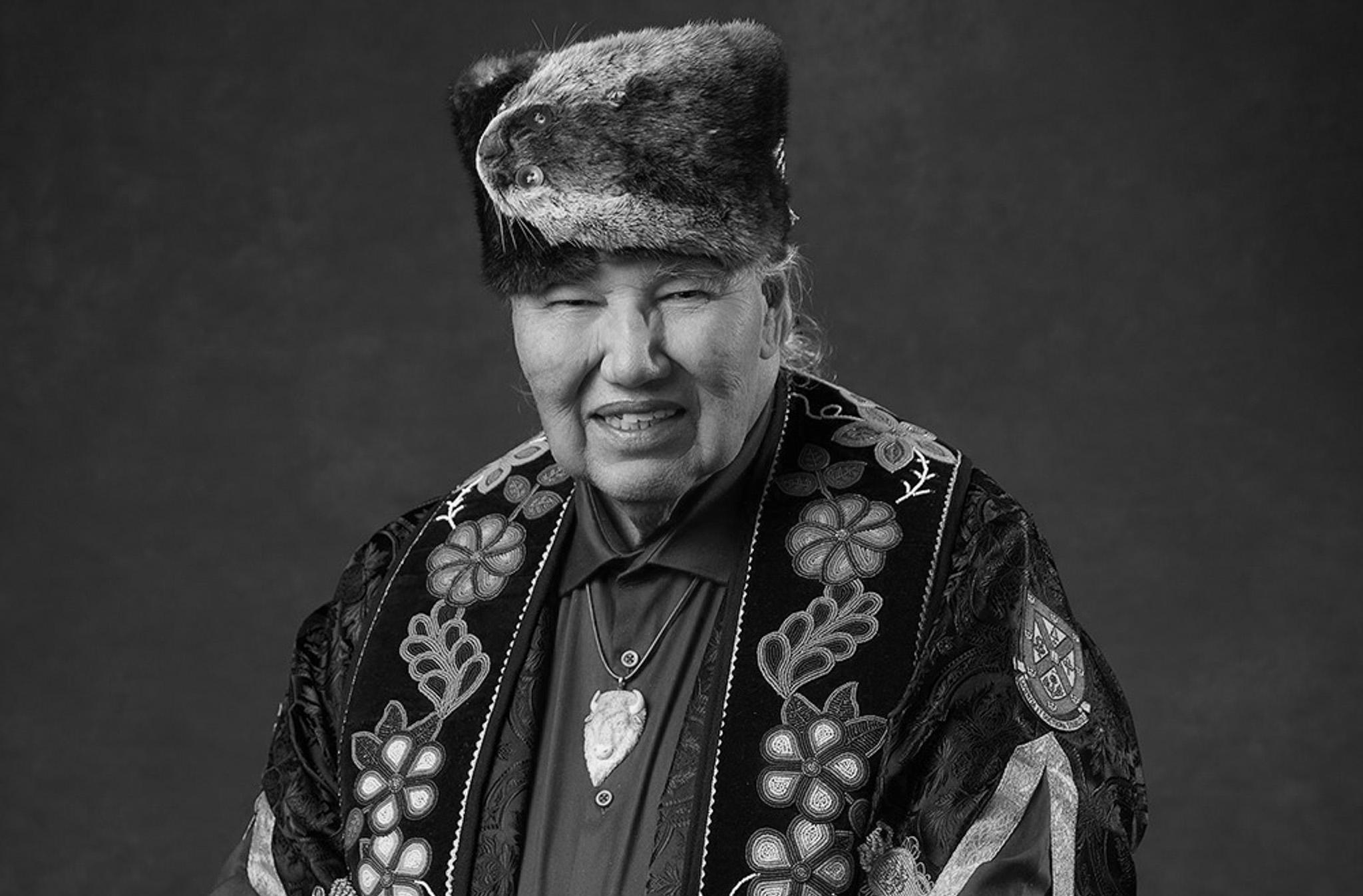
RemembRance Day event Recognizes fallen canaDian solDieRs
Community gathered in Grant Hall to mark eighty years since the end of World War II
Yael Rusonik Assistant News Editor
Members of the Kingston community came together to remember the sacrifice of soldiers who served and fell for Canada.
The University hosted its annual Remembrance Day Assembly on Nov. 11 at 10:30 a.m. in Grant Hall. Hundreds of community members gathered for the twenty-five-minute ceremony, which featured musical, poetic, and oral tributes.
The stage was adorned with photographs of Queen’s students, alumni, and faculty who had served in the Canadian Army, Navy, or Air Force—including some of the 367 AMS members who died in service. While these photos had once been lost in a fire in ’47, Queen’s archivists and volunteers were able to piece the names and faces back together, fully reconstructing the
display in ’95.
The Assembly began with a brief land acknowledgement from the University’s Interfaith Chaplain, Erin Burns. She reminded the audience that this past Remembrance Day marked eighty years since the end of World War II, and encouraged attendants to remember the millions of Canadians who served in the war.
“Your presence serves as a lasting reminder of the courage, sacrifice, and the enduring connection between Queen’s and those who served,” Burns said. “As the Queen’s community, we ground our remembrance in the contributions of students, staff, faculty and alumni, not only in the past, but currently, and in hope of future peace.”
The ceremony then continued with the singing of the National Anthem, led by the Queen’s Choir and their Director, Darrell Christie. This was followed by a trumpet performance of “Last Post, Lament and Rouse” by Dan Tremblay, a moment of silence dedicated to Canada’s fallen soldiers, and a bagpipe performance from Cheryl Pulling.
Veronique Berube, ArtSci ’26, then recited “In Flanders Field”—a poem written by Lieutenant Colonel to honour soldiers who died in World War I. Two more poems, “In
Retrospect” by Simon Armitage and “Act of Remembrance” by Laurence Binyon, were recited by University Ombudsperson Norma Barrett and Chief Information Officer Marie Claude Arguin.
An Assistant Professor and veteran, Paul Hungler, then reflected on how Remembrance Day ceremonies have changed in the eighty years passed since World War II.
“When I was young, the memorials were filled with the stoic faces of World War II veterans,” he said. “Many of those heroes who once stood among us are now gone. I miss their faces, what they represented. But most of all, I miss their stories. Stories of love and loss, courage and sacrifice, and above all, the strength of the human spirit.”
Hungler offered the stories of two veterans who had influenced his life: his grandfather and his father-in-law. Hungler’s grandfather, like thousands of Canadians, put his university degree on hold to put his life on the line for the Canadian army.
“These were people just like you,
to continue this commitment to dialogue and grow upon it.
“I would love to see things that are identified as “being Queen’s” in dialogue with Indigenous elements. For instance, at Convocation, the ceremony could feature both the fabulous pipers, but also Indigenous drummers. That dialogue would be amazing,” she said.
“I also want to know that promises made to the Indigenous community at Queen’s are honoured. That could be something as simple as a commitment to providing weather protection for the Indigenous Outdoor Gathering Space, or as profound as acknowledging past harms.”
The University’s current Chancellor, and citizen of the Manitoba Metis Federation, Shelagh Rogers, also shared in a statement to The Journal a story about Sinclair when he was in the hospital that reflected Sinclair’s commitment to dialogue at Queen’s.
“Last October, when he was in the hospital, his bed was facing a crucifix on the opposite wall.
I asked him if he wanted me to take it down. He said no. He wanted it to have a dialogue with the sweetgrass in the room,” Rogers wrote.
It’s Rogers’ goal
classmates, neighbours, friends, who had their whole lives and futures ahead of them,” he said.
His father-in-law, Ernie, similarly volunteered for the army and was eventually awarded the Albert Medal for Lifesaving by the Queen of England to honour his heroism.
“One day, while working in the naval shipyards in Barry, there was an explosion among the ships,” Hungler said. “Without any concern for his own safety, Ernie ran into the burning vessel and pulled five sailors, most of them with extensive burns, to safety.”
The Queen’s Choir concluded
Both Deane and Rogers reflected not only on Sinclair’s national impact, but also on the personal warmth and intellect he brought to every conversation. They described him as kind, brilliant, and humorous.
“He was an absolutely extraordinary human being whose humour, kindness and great intelligence had an indelible effect on every person he met and every institution he served,” Deane wrote.
The Queen’s community will honour Sinclair’s legacy through the newly established Chancellor Emeritus Murray Sinclair Commemorative Lecture Series, launching in January 2026, alongside his official University portrait, which will be unveiled at the inaugural lecture.
“I see this as a series where his legacy is both explored and upheld, where truth is paramount. I hope it will lead to honest and open conversations about where we are at as a country, as a community and as a University,” Rogers wrote.
the Assembly with a performance of “In Remembrance” by Eleanor Daley. Attendants then walked together to the 5th Company Plith, a memorial honouring those who fought in the 5th Field Company in both world wars, for wreath laying. During this ceremony, the names of the Queen’s community members who lost their lives in World War II were read, and “Commitment to Remember” was recited by Megan Hook, ConEd ’27.
Following the wreath laying, all attendants were invited by the Queen’s Military and Veterans Network for fellowship and refreshments in Wallace Hall.

Queen’s will begin the lecture series in Jan. 2026.
PHOTO SUPPLIED BY QUEEN’S UNIVERSITY PRINCIPALS OFFICE
The Assembly took place on Nov. 11.
PHOTO BY CLAIRE BAK
Students voice concerns with revised Fine Arts program
Following a two-year suspension, the Fine Arts program will return with a bigger focus on theory
Yael Rusonik Assistant News Editor
The University’s new Visual Arts program is drawing concern from Fine Arts students who fear the replacement sacrifices practice for theory.
Two years after suspending admission to its Bachelor of Fine Arts program in 2023, the University’s now preparing to replace it with a new Visual Arts program. In a statement to The Journal, the University explained the new program is “currently progressing through the standard university review process, pending final approval by Senate.” The
Motion urging for pension divestment from companies tied to weapons manufacturing has been delayed after a scheduled meeting was postponed.
On Oct 10. the Queen’s University Faculty Association (QUFA) received a motion from the QUFA Divestment Campaign Team. The motion calls for the University Pension Plan (UPP) to divest from any company that profits from, or manufactures weapons for war. The divestment team’s made up of Queen’s faculty, librarians, and archivists.
The meeting to address the motion was set for Nov. 12, but on Nov. 3, the QUFA Divestment Campaign Team received an e-mail from QUFA that the special meeting had been postponed, with no new
program will be co-developed and co-run by the Departments of Art History and Art Conservation, Film and Media, and the DAN School of Drama and Music.
The last remaining member of the Fine Arts DSC, Fiona McMillan, ArtSci ‘26, explained in an interview with The Journal that she has some concerns regarding the program’s new form. According to McMillan, while the Fine Arts program has previously been based almost entirely on guided hands-on experience, undisclosed professors have told her that half of the incoming Visual Arts program will instead be based on more theoretical, lecture-based learning.
“When I was applying to different art schools, what drew me to Queen’s so much is that nothing was theoretical,” McMillan said. “I wasn’t going to be spending any time talking about making art [...], I was just going to actually do it.
[...] And I really love that, because I think it is the only way to hone your craft if you want to be a fine artist.”
Queen’s confirmed that the new
date for the meeting set.
The Journal reached out to the QUFA President, Karen Rudie, about the postponement of the meeting, but she declined an interview, citing that they will only be communicating with members.
The motion urges QUFA to divest from companies connected to the manufacturing or distribution of arms used in what the motion describes as “illegal occupations, and other breaches of international law in Palestine, Sudan, Myanmar, and other lands and countries.”
Although the motion is focused on broader ethical injustices, it does specifically cite recent findings by United Nations bodies and independent mortality surveys,
program will be rooted in a balance of theory and practice.
“The new Visual Arts program aims to prepare the next generation of artists with both the conceptual foundation and the hands-on experience necessary to thrive in their field,” the University wrote.
Despite two years having passed since the initial suspension, McMillan remains upset with the way it was handled by the University. She claims that, despite the University knowing they would be shutting the program down in October, they didn’t formally inform applicants until the end of the school year, thereby allowing applicants to spend time and money applying for a nonexistent program.
“I remember the process of making a portfolio, and it was absolutely draining and exhausting,” McMillan said. “I specifically remember Queen’s had certain long-answer questions that other schools didn’t have. [...] That still makes me so angry, the fact that people applied to this program, made portfolios and were waiting
arguing that there are reasonable grounds to believe genocide is being committed in Gaza and that investments in companies enabling such actions are incompatible with the UPP’s stated ethical investment principles. Such as the “responsibility to promote the health of capital markets and the financial, social, and environmental systems on which capital markets rely.”
In a statement to The Journal on behalf of QUFA Divestment Campaign Team, Queen’s Professor Ariel Salzmann and Librarian for Educational Initiatives Nasser Saleh wrote that the divestment team hasn’t received any updates on when the meeting will be, but QUFA has acknowledged the postponement, and “updates are
Council of Ontario Universities responds to Ontario Fall Economic Statement
New statement fails to deliver an increase in university operating funding
Lilly Meechan Assistant News Editor
Ontario universities are warning that financial strain risks hindering the government’s mission to build a strong economy.
Ontario’s 2025 Fall Economic Statement (FES) titled A Plan to Protect Ontario was delivered by Ontario Finance Minister Peter Bethlenfalvy on Nov. 6 and has received some backlash from the Council of Ontario Universities (COU).
on acceptance letters, and got an email not to say they didn’t get in, but that they were actually never going to be able to get in because the program doesn’t exist.”
Despite specific questioning from The Journal, the University did not comment on the validity of this timeline.
Regarding the 2023 suspension, McMillan also claims that undisclosed professors have suggested to her one of the more discrete reasons for suspending admissions was to avoid an inspection of Ontario Hall—the Fine Arts building.
According to McMillan, it was a failed inspection of Ontario Hall that resulted in the program having once been shut down in 2011. She says that another inspection was coming up in 2023, so the University preemptively shut down the program to avoid failing again.
“They were worried about optics,” McMillan said. “They didn’t want to get another article published saying they didn’t do anything for 10 years. So they said, okay, we’re going to suspend [admissions] first, beat you to the punch, and then you can’t say we failed this test, because we never even did the test.”
In response to this allegation, the University told The Journal that there were never any building academic inspections. They claim that part of the academic review process does involve a review of the teaching space, but the teaching space is different than the physical building.
According to the University, the new program’s development is independent of any specific physical location, although the Faculty of Arts and Sciences will be exploring the creation of specialized studio facilities.
new motion calls foR QUfa to Divest fRom companies manUfactURing weapons UseD in “illegal occUpations”
Special
Meeting to consider divest was postponed, with no new date set
expected soon.”
Salzman and Saleh also shared that the main goal of the motion is to align QUFA’s UPP with the ethical standards set by the UPP screening process.
“The University Pension Plan (UPP) Ontario already screens its investment portfolio according to a responsible investing approach that integrates environmental, social, and governance (ESG) factors into its investment decisions,” they said.
“The motion’s primary goal is to align QUFA’s pension investments with these ethical standards by urging the UPP to divest from companies complicit in human rights violations.”
According to Saleh and Salzmann, the motion isn’t targeted at a specific country but rather
about upholding the principle that educators shouldn’t profit from “war, crimes against humanity, violations of human rights or crimes of war” and should invest in students’ futures.
“In addition to the overwhelming documentation of Israel’s genocide in Gaza over the past two years, it’s widely known that Canadian weapons are being used to slaughter civilians in Sudan. For many faculty members, this is a matter of ethical responsibility and solidarity with global movements advocating for justice and accountability.”
Continued online at www.queensjournal.ca
Also claiming that the FES failed to address the core financial stressors on Ontario universities, including rising deficits, frozen tuition, and funding caps for domestic enrolment.
In a response to the FES, the COU said Ontario’s universities continue to face serious and growing shortfalls. According to the statement, universities have implemented nearly $550 million in cuts over recent years, resulting in staff reductions, program and service cuts.
Queen’s has experienced these cuts firsthand, including some courses seeing half of their TAs being cut earlier this year, on top of claims that Faculty of Arts and Science staff were laid off in the summer, along with cuts to the DAN School of Drama and Music.
Even after these cuts, according to the COU, there is still a projected $265 million deficit across Ontario’s universities in 2025–26, with ongoing deficits expected to grow in the years ahead.
“Ontario’s universities support
The COU, which represents publicly assisted universities across the province, released a statement on Nov. 6. In it, they argue that the FES focused broadly on economic growth and affordability but included few new commitments for postsecondary institutions.
the government’s continued focus on building a strong economy […] and reaffirm that sustained investment in universities is essential to achieving that goal,” the COU said in the release. “Yet the financial challenges facing Ontario’s universities threaten their ability to deliver on that mission.”
The statement follows an earlier Oct. 29 release issued ahead of the FES, in which COU President and CEO Steve Orsini called the situation a “breaking point.”
The COU Oct. 29 release issued four key initiatives calling the province to double and continue to increase sustainability funding to match rising costs, fund enrolment growth to meet student demand, boost support for smaller and specialized institutions, and provide financial relief for losses tied to Bill 124 and declining international student enrolment. The Ontario government’s FES didn’t deliver on any of these calls to action in the statement.
According to the COU, Ontario universities receive the lowest per-student funding in Canada and in 2022-23, students were funded only 55 per cent of the national average. Combined with the ongoing tuition freeze, the cap on funded domestic enrolment has further strained budgets, the COU wrote.
Queen’s alone projects its operating budget deficit to be $26.4 million for 2025-26, largely due to a decline in graduate tuition revenue and provincial and federal policies and funding cuts.
The COU claims that Ontario’s universities are also forecasting a one-billion-dollar revenue loss over two years due to federal changes to study permits. The Nov. 6 COU release warned that a potential halving of international study permits outlined in the federal budget could worsen the situation and further undermine financial stability. In both statements, the COU emphasized the role of universities as engines of economic growth, workforce development, and innovation.
“The need is urgent, but the
solution is clear,” Orsini wrote. “Investing in universities is investing in Ontario’s future prosperity.” The Journal reached out to the Ministry of Colleges and Universities for comment following COU’s Oct. 29 statement, but the Ministry didn’t respond.
CORRECTIONS
Students say DAN School left in “crisis” due to budget cuts
A previous version of the story incorrectly named Bob Lemieux and Barbara Crow, even though the source chose not to identify the Arts and Sciences Dean with whom he requested a meeting, but was allegedly denied.
Additionally, the previous headline wasn’t factually substantiated and has been updated to reflect a direct quote.
Incorrect information appeared in the Oct. 31 issue of The Queen’s Journal The Journal regrets the error.
Thrust into the world of familial caretaking, youth are driven to grow up almost overnight
‘At the end of the day, at some point in their lives, every child, everyone, will be a caregiver and will deal with loss,’ student says
Eva Sheahan Features Editor
While most students worry about midterms and meal plans, young caregivers at Queen’s are quietly juggling a second, heavier life—managing medications, navigating hospitals, and carrying the emotional weight of a loved one’s illness, often without even realizing that caregiver is the word for what they’ve become.
And naming that role is the first step. Johns Hopkins Medicine defines a caregiver as “someone who provides assistance in meeting the daily needs of another person,” a responsibility students like Youths for Hospice Co-Founders Lucas Perri, HealthSci ’28, and Jay Hung, HealthSci ’27, know intimately. Through Youths for Hospice and Queen’s Young Caregivers Community (QYCC), they’re working to make those unseen experiences visible. Founded in 2022, Youths for Hospice aims to support and raise awareness for youth caring for loved ones receiving hospice palliative care —care focused on easing suffering and improving quality of life for people with advanced, end-of-life illnesses, according to Perri.
Kingston local Jane* lost her husband of 64 years, John*, nearly two years ago. Before his death, he received palliative care at Kingston General Hospital (KGH) before moving home for his final two weeks, where he could spend his last days in familiar comfort.
“We were able to have John in one of the front windows [at home] overlooking Lake Ontario, looking out to Woolfe Island which he was very familiar with from his childhood spent in Kingston so that went very well,” Jane said in an interview with The Journal. She said watching the island brought John a deep sense of comfort—perhaps even more than it had in his childhood. Those quiet moments by the water eased his final days.
“It’s a common misconception that hospice palliative care is a sad place. Most people think of hospice and palliative care as just a space of dying, but hospices and palliative care units are actually very happy spaces because everybody’s trying to improve quality of life,” Perri said in an interview with The Journal.
He also noted that many
people assume caregiving and palliative care are concerns only for the elderly—a misconception echoed by Queen’s student Roxy Adam, ArtSci ’26.
“I haven’t heard the term [young caregivers] before. Usually when I think of caregiving, it’s in the context of a profession or old age,” Adam said in an interview with The Journal. Adam explains their reaction reflects a broader stigma: how society often imagines illness and end-of-life care as experiences reserved for old age, even though that’s far from always true, according to Adam.
This year, to encourage more open conversations and thorough understanding surrounding young loss and palliative care, especially amongst youth and children, Perri and his younger brother co-authored and published a storybook called Someone I Love is Dying in Hospice—What Should I Expect?
“There’s bright colours and pictures in the book that the kids can relate to. It aims to make them feel like loss isn’t something that’s not normal because it is,” Perri said. He frequently discussed how loss, hospice care, and caregiving isn’t often openly talked about which makes it harder for youth to identify what they’re going through and seek support.
“Death’s one of those topics that we’re all afraid of talking about and sometimes you just need to break the ice somehow. I mean, we’re all headed one way,” Jane said. However, Perri and Hung note that the taboo that surrounds conversations of death also shrouds conversations of caregiving in general.
Both Perri and Hung were interested in pursuing activism and advocacy for young caregivers as a result of their personal experiences because they wanted youth to have outlets that they felt they didn’t initially have.
“When I was in grade 9, I was taking care of my mom because she was very sick. As well, my grandfather was put into hospice palliative care. It was very difficult to navigate the loss and I had no idea where to start,” Perri said.
These sentiments of confusion or loss were felt in a similar fashion by Hung as well.
“In 2019, I became a young caregiver to my mom. She was diagnosed with late-stage cancer. I experienced the unique barriers attributed to being a young caregiver, like the isolation and loneliness that came along with not really having peers that related with me,” Hung said in an interview with The Journal.
To mitigate the lack of conversation surrounding caregiving, Youths for Hospice provides a caregiver identification quiz to help students reflect on
whether or not they are caregivers. They also offer caregiver guides as resources, including one created by their partner, Ontario Caregivers Organization (OCO).
“I think most people who are caregivers don’t even realize that they are caregivers until someone identifies them,” Perri said, stressing the importance of identification.

After discussing what young caregiving was to Adam, who hadn’t heard the term before, she realized she’d experience as a young caregiver. In her second year, she spent two months taking care of her grandmother after her knee surgery, including administering her medication, moving her from the bed to the bathroom, making her meals, translating the physiotherapist from English to Romanian, and more.
“Now that I think about it, I guess I’ve been a young caregiver, I just never had the word for this experience,” Adam said. After reflecting more on her own experience of caregiving, Adam emphasized that resources for young caregivers is of the utmost importance.
“I only had to [take care of my grandmother] for a twomonth span and while I didn’t have school or work to worry about, because I was on winter break, and yet it was incredibly straining and stressful…If this was long term, as it is for many young caregivers, I feel it would’ve significantly strained my mental health and interpersonal relationships. I empathize with the mental and physical toll that these situations can have, as such resources for young caregivers are not only valuable, but essential,” Adam said in an interview with The Journal
Alex McDonald, ArtSci ’26, also has experience caring for an ailing grandmother that has made her more empathetic to the caregiving experience. “Last year, when she broke her shoulder, I spent many weekends travelling to and from Toronto, spending time with her in the hospital and liaising between doctors, specialists and my mother,” McDonald said in a statement to The Journal. [Taking care of me grandmother] gave me a new appreciation for students who have daily caregiving
commitments. I can only imagine the challenge of balancing school, work, self-care, and caregiving for another person.”
Perri and Hung emphasize that when more students recognize themselves as young caregivers, conversations about caregiving become easier to start—much like Adam, who only understood her own experience once she had the language for it. Perri notes that many young people struggle to identify themselves as caregivers or seek support because caring for family is often seen as simply expected.
“People treat [caregiving] as a given, but in reality, there’s lots of effects on you. You start to sacrifice parts of yourself. That’s the issue and that’s why self-identification needs to be done because when you identify yourself then you’re able to seek help and go find resources that can allow you to restore the well-being you once had,” Perri said.
Adam shares that the same assumptions shape her own view of caregiving—especially within families, where helping a loved one is seen as a given, even when it quietly demands more than a young person can realistically give.
“There is family obligation at play; you must help your family and your elders. This may lead to taboos, such as questions like why should caregiving strain you or why do you need support or even why make this about yourself I think taboos surround these topics because young caregiving in many cases is expected as a given, giving it a label makes it concrete and real,” Adam said.
For Hung, caregiving initially carried a similarly rigid meaning. When he began caring for his mother at just 13, he slipped into negativity and despair, overwhelmed by a sense of victimhood in the wake of her diagnosis. “Yet, as I matured and throughout my caregiving
experience, I realized that my role was to support my mom as well,” Hung said. “I think it was tough balancing the two things. Sometimes I felt like I neglected myself and I felt like there was nobody around me that had gone through a similar experience.”
However, Hung told The Journal that getting involved with QYCC helped broaden his understanding of caregiving and connect him with other youth in similar situations, easing the isolation that often accompanies the role. Because of this, he believes QYCC’s greatest strength lies in its outreach and community building. As co-president, he hopes to expand that work this year by developing a peer support program in partnership with the Ontario Caregivers Organization (OCO).
Resources like QYCC’s peer support are crucial, Perri notes, because caregivers often have so few places to turn—largely a result of the limited open dialogue around caregiving.
McDonald echoed a need for more dialogue. Reflecting on her own experience caring for her grandmother, she said the short-term strain made her realize how essential strong support systems are for students who shoulder caregiving responsibilities every day.
“I think students who have caregiving responsibilities may feel different to other students, they may lack the time or energy to participate in the same social activities as other students. I would imagine a support group or more services would be appreciated, I think there is likely a whole cohort of people who are in search of resources,” McDonald said.
*Names changed due to safety concerns
Veteran support shouldn’t be this complicated

Choosing to wear a poppy shouldn’t be politicized, but neither should the courtroom.
On Nov. 6, Nova Scotia Premier Tim Houston posted to Facebook, claiming there was an order issued to prohibit court employees from wearing a poppy while on duty. Suggesting the logic behind this order’ is that poppies are a ‘political statement,’ Houston called the order “wrong” and “disgusting.” While banning the poppy in the courtroom feels unnecessary given its relatively apolitical nature, the issue isn’t as black and white as Houston makes it out to be.
While the Nova Scotia Judiciary responded that no such order had been issued, it’s understandable why it could’ve come about. Because the money from poppy sales goes towards veterans’ affairs, the poppy does support a cause. Though in Canada, most are proud to wear a poppy
as a symbol of remembrance and respect, some may see the support for veterans as a political statement in support of veterans. All judicial systems must understand that different things are political to different people, and perhaps it’s best to ban symbols outright. That said, banning certain symbols could impinge on someone’s personal liberties. As seen in the response to Quebec’s Bill 21 “Act respecting the laicity of the State,” which bans public servants from wearing religious symbols isn’t fair, considering how deeply personal and sincerely held religious beliefs can be. Though not a religious symbol, the poppy’ is incredibly important to some people, and it isn’t completely clear where the line between personal expression and political symbolism lies.
Carney’s Budget 2025 provides the money—but no detailed plans to support victims of gender-based violence
Mayah Ricketts
QTBIPOC
Advisory Board Member
Prime Minister Mark Carney’s new plan to “end” gender-based violence (GBV) in Canada isn’t specific enough to put faith in.
On Nov. 4, the federal government tabled Budget 2025, which includes a section titled “protecting Canadian Cultures, Values, and Identity,” and funding for the Department of Women and Gender Equality (WAGE) is the first sub-topic. The Budget includes $223.4 million, then $44.7 million every year after that. The federal government intends for this funding to be used to “support women’s organizations” as they address the issues associated with GBV.
But this lack of detail is worrisome. Finance Minister FrançoisPhilippe Champagne may not have found it necessary to include more information. However, GBV can’t be classified as an epidemic, then simultaneously given lacklustre attention in a federal budget.
This isn’t the first time the government has shown interest in bringing an end to GBV. They implemented The National Action Plan
The poppy shouldn’t affect a court official’s ability to do their job in the first place. Courts should be free of bias regardless of what someone’ is wearing. The expectation that judges and staff don’t wear any symbols of any kind is in place for a reason; however, the poppy seems to be an unintended casualty of this expectation.
Though in support of a cause, the poppy isn’t an inherently political statement. Every November, there seems to be some debate over poppies, whether it be the legitimacy of rainbow poppies or the presence of poppies in the workplace; it shouldn’t be this controversial to show your support for veterans past and present, who’ve made significant sacrifices to preserve our freedom. Trends such as the rainbow poppy were blown out of proportion, creating undue controversy on the topic.
The poppy is a universal symbol of remembrance and mourning, and it’s a shame its presence is consistently reduced to technical debates. Poppies should be allowed in the courtroom; however, the need for impartiality doesn’t make the question easy. Perhaps before taking to social media, Houston should’ve considered the fact that a poppy might not be appropriate in all cases.
—Journal
Editorial Board

to End Gender-Based Violence in July 2024, and The Federal Gender-based Violence Strategy in September 2025.
However, violent attacks against women are still being perpetrated every day. Savannah Rose Kulla-Davies was shot by her ex-partner in broad daylight. The Toronto Police estimate that over the last ten years, the number of cases involving intimate partner violence remained between 17,200 to 19,300 a year—and it isn’t getting better.
Budget 2025 needs to prove that it won’t be like their previous plans. The budget doesn’t specify exactly which organizations will receive funding and which ones won’t.
It does, however, give the impression that it’ll emphasize the support given to “underserved” groups like the many Indigenous women who are disproportionately more likely to experience gender-based violence. But this one detail isn’t sufficient to make up for the overall lack.
To show Canadians that their most recent plan is more than just an empty promise, the federal government needs to prove that they’ve properly engaged with the community. Carney should’ve worked more closely with WAGE to discuss precisely how the funding in Budget 2025 will be allocated. The budget should’ve included the names of the organizations they plan to support, how much money they will get, and for how long. This would ensure that they intend to follow-through and hold themselves accountable.
Money is going towards WAGE, but what they plan to do with these millions of dollars remains unclear.
All Canadians, especially women who have been affected by GBV, deserve to know that their country’s leaders are working tirelessly to ensure their safety. The government needs to provide a tangible, thoughtout plan to go along with their funding. Otherwise, Canadians may start to believe they don’t actually care.
Mayah is a 3rd-year History and Classical Studies student and one of ‘The Journal’s’ QTBIPOC Advisory Board members
PHOTO BY JASHAN DUA
ILLUSTRATION BY CLAIRE BAK
The ‘Is Having a
Boyfriend Embarrassing
Now?’ article had the potential to be Feminist, but it missed the mark

The article falls short, but not for the reasons you’re probably thinking
Maya Galvin Contributor
The internet’s blind praise for this piece eclipses how the author oversimplifies a conversation that needs to be had.
On Oct. 25, British Vogue published Chanté Joseph’s article 'Is Having a Boyfriend Embarrassing Now?' To say that Joseph’s piece has captivated the internet would be an understatement—there’s been no shortage of single and partnered women praising the article and wholeheartedly embracing the declaration of the season: being single is in, and having a boyfriend isn’t only out, it’s embarrassing.
After seeing TikTok and Instagram flooded with posts from women championing Vogue’s affirmation of the coolness of
singlehood, I decided that as a self-proclaimed feminist, I needed to see what all the chatter was about. As I scrolled through each of Joseph’s paragraphs, I found myself wondering if I was reading the same article everyone was praising. I read through for a second time, my hope dissipating with every line until a realization hit me: Joseph’s article is, at best, performative. You’re likely anticipating a defence of boyfriends and relationships. I’m not here to do that. To be lear, I commend what Joseph is trying to do in her work. There were parts that I agreed with, but ultimately, I didn’t find it nearly as revolutionary as the masses. I think Joseph missed the opportunity to be truly feminist and provide a prelude to what’s a long-overdue conversation.
For those unfamiliar with this article, Joseph discusses the recent revisioning of how relationships are being presented online.
She reminds us of a time
where it seemed like everyone’s content was “my boyfriend”-ified, as if their identity was intertwined with having a boyfriend. I instantly understood the reference: think TikTok trends to the effect of, “Asking my boyfriend how often he thinks about the Roman Empire” and “Get ready with me while my boyfriend does my voiceover.” In contrast, Joseph asserts that heterosexual women now prefer to be more coy, posting hints or indications of being in a relationship, without showing him outright.
The core of Joseph’s argument is unmistakable when she writes, “So, what gives. Are people embarrassed by their boyfriends now? Or is something more complicated going on? To me, it feels like the result of women wanting to straddle two worlds: one where they can receive the social benefits of having a partner, but also not appear so boyfriendobsessed that they come across as quite culturally loser-ish.” I think that most readers took his, along with her title, and ran.
Circulating now is this idea that Vogue has announced it’s embarrassing to have a boyfriend, and therefore, what a time to be a woman, and what a time to be single.
For anyone who has engaged with even the most foundational feminist discourse, this seems to be an overreach at minimum; her claims aren’t novel, and not all that feminist. She barely scratches the surface of a deeper societal and gendered issue that deserves a more nuanced discussion.
Perhaps one of the more disheartening parts of this piece is its exclusive focus on the social media aspect and not the bigger picture at play. Rather than exploring whether having a boyfriend is embarrassing now, as the title suggests, Joseph centres her discussion on whether it’s embarrassing to post having a boyfriend.
Continued online at www.queensjournal.ca
Letter's to the editor
Re: DAN School left in turmoil due to budget cuts
It was very disappointing to read about the erroneous supposed state of the DAN School and its music program in the Oct. 31 and Nov. 7 issues of The Journal
The DAN School continues to be home to an outstanding group of faculty and staff who provide exceptionally creative and innovative opportunities for our students. These colleagues also conduct research across the performing arts that reaches national and international audiences. Our curricula are cutting-edge—I am proud of them and recommend the School highly.
Queen’s music students continue to receive regularly scheduled high-calibre instruction and coaching, both one-on-one and in small group settings. It goes without saying that our instructors are exceptionaland leaders in their respective fields. Moreover, the type of instruction and assessment align with disciplinary expectations that meet and exceed national standards. Our enrollment numbers are stable, with a reduction this year over last by just a single spot, and a growing enrollment since the pandemic. We continue to be one of the largest units in the Faculty of Arts and Science. We are experiencing profound changes in the higher education sector by shrinking financial resources and changes in disciplinary norms. This is the case in universities across Canada and in many parts of the English-speaking world. Members of the DAN School are facing these challenges with creativity and grit, so that our students will continue to be well-prepared to contribute to the field with confidence, creativity and independence. We continue to adapt and develop collaborations, including leveraging opportunities to develop partnerships with local and international institutions, researchers, and performers.
Continued online at www.queensjournal.ca
Maya reflects on the reactions brought by a British Vogue article.
PHOTO BY JASHAN DUA
$2-billion federal mining investment could reshape engineering education at Queen’s
Responsible resource development becomes a focus in Canada’s minerals plan
Katarina Krivokapic Business, Science, & Technology Editor
Canada’s plan to expand its role in the global critical minerals market is moving from strategy to policy.
The federal government’s 2025 budget proposes a two-billion-dollar fund to support the extraction and processing of minerals used in electric vehicles, clean energy systems, defense, and other high-demand applications. The budget must pass three readings in the House of Commons before it can be implemented. It’s already cleared the first two, and the final vote—set for Nov. 17—will determine whether it’s approved. If it passes, the funding could guide new project development and the training of engineers
entering the mining sector.
Vlad Kecojevic, professor and head of The Robert M. Buchan Department of Mining in the Stephen J.R. Smith Faculty of Engineering and Applied Science at Queen’s, explained that the proposed funding would significantly expand mining and processing capacity in Canada.
“If this budget is approved, it would have a tremendous impact on increasing capacity for mines and processing facilities critical to batteries, clean energy, and advanced technologies,” Kecojevic said in an interview with The Journal “It would also help attract private investment.”
The proposed federal investment may also affect how mining engineers are trained.
Kecojevic said the sector is increasingly looking for engineers with skills

in automation, digital tools, sustainability, and low-carbon processes. He noted that Queen’s programs aim to reflect these priorities and train students in a “humancentred” approach to mining. The undergraduate curriculum includes design-focused coursework and opportunities for industry internships, while graduate and certificate programs offer further training in areas such as mining technologies and social performance management.
He also emphasized that the department incorporates community engagement, environmental considerations, and Indigenous partnerships into its programs.
According to Kecojevic, efforts to broaden participation in mining education have continued as well: female enrolment in
the department has increased from 12 per cent in 2007 to 34 per cent in 2025.
Nationally, Canada’s limited refining and processing capacity remains a significant challenge. Although the country holds substantial mineral reserves, much of the processing takes place abroad.
“Canada needs more facilities capable of refining and processing critical minerals,” Kecojevic said.
He added that expanded training in mining, mineral processing, and advanced manufacturing, along with reliable access to clean electricity and strong partnerships with Indigenous communities, will be crucial as mining projects move ahead.
The budget proposes replacing the industrial emissions cap with a new pricing system,
prompting questions about whether increased mining activity needed for critical minerals will be able to align with Canada’s net-zero targets. Kecojevic said meeting environmental goals will require continued innovation, including electrified equipment, renewable power, more efficient processing, and potential carbon-capture technologies.
As Canada increases its focus on critical minerals, Kecojevic said he sees significant opportunities for Queen’s.
“Queen’s is very well positioned to contribute to these efforts. We have the largest undergraduate mining program in North America, and the department is already developing the talent needed to support future projects,” he said.

Vlad Kecojevic identified the need for skilled engineers in Canada’s critical minerals sector.
PHOTO BY JASHAN DUA
Golden again: Men’s cross-country defends U Sports title while women’s finish fourth
Wheeler-Dee clinches individual bronze and named First Team All-Canadian
Taahaa Lone Senior Sports Editor
Last weekend, the Gaels capped off a stellar cross-country season by establishing themselves once again at the national level.
On Nov. 8, Queen’s men’s and women’s cross country teams took a trip to Sherbrooke, QC., to participate in the 2025 U Sports Cross Country Championship. The result was pure excellence, as the men defended their national title, while the women once again surpassed expectations by finishing in fourth place.
For the men, it was a story of team dominance. The Gaels’ 63 points—calculated using the placements of their best five runners—were a whopping 21 places better than the runners-up from the Université de Sherbrooke, and halving the score of the third-place University of Guelph.
Track star Jude Wheeler-Dee, ConEd ’26, earned bronze, and his time of 00:24:24 was a jump from last year, when he finished 13th. Roman Mironov, Comm ’26, capped off his impressive season with a top-10 finish at 8th, a six-spot jump from 14th in 2024.
In an interview with The Journal, Wheeler-Dee spoke about his performance with pride. “I wanted to win, I’m not going to pretend I didn’t,” he said. “But the bigger thing for me was being competitive and finishing on empty. I walked out of that race knowing I tried as hard as I could.”
Angus Skinner, ConEd ’28, placed 11th, up from 30th last year. Tanner Hueglin, ArtSci ’26, took 17th, and Peter Neill, Sci ’27, rounded out Queen’s scorecard with a strong finish at 24th.
Wheeler-Dee’s podium performance earned him a nod as a First Team All-Canadian, while Mironov and Skinner were honoured as Second Team All-Canadians.
Ethan Rashid-Cocker, Comm ’27, and Owen Danby, ArtSci ’27, didn’t make Queen’s top five, but established themselves well in the top half of the 163-man competition, finishing 49th and 58th, respectively.
The performance demonstrated Queen’s strength of their depth as a group, as the team’s fourth- and fifth-place finishers made up much of the difference to earn gold. Wheeler-Dee
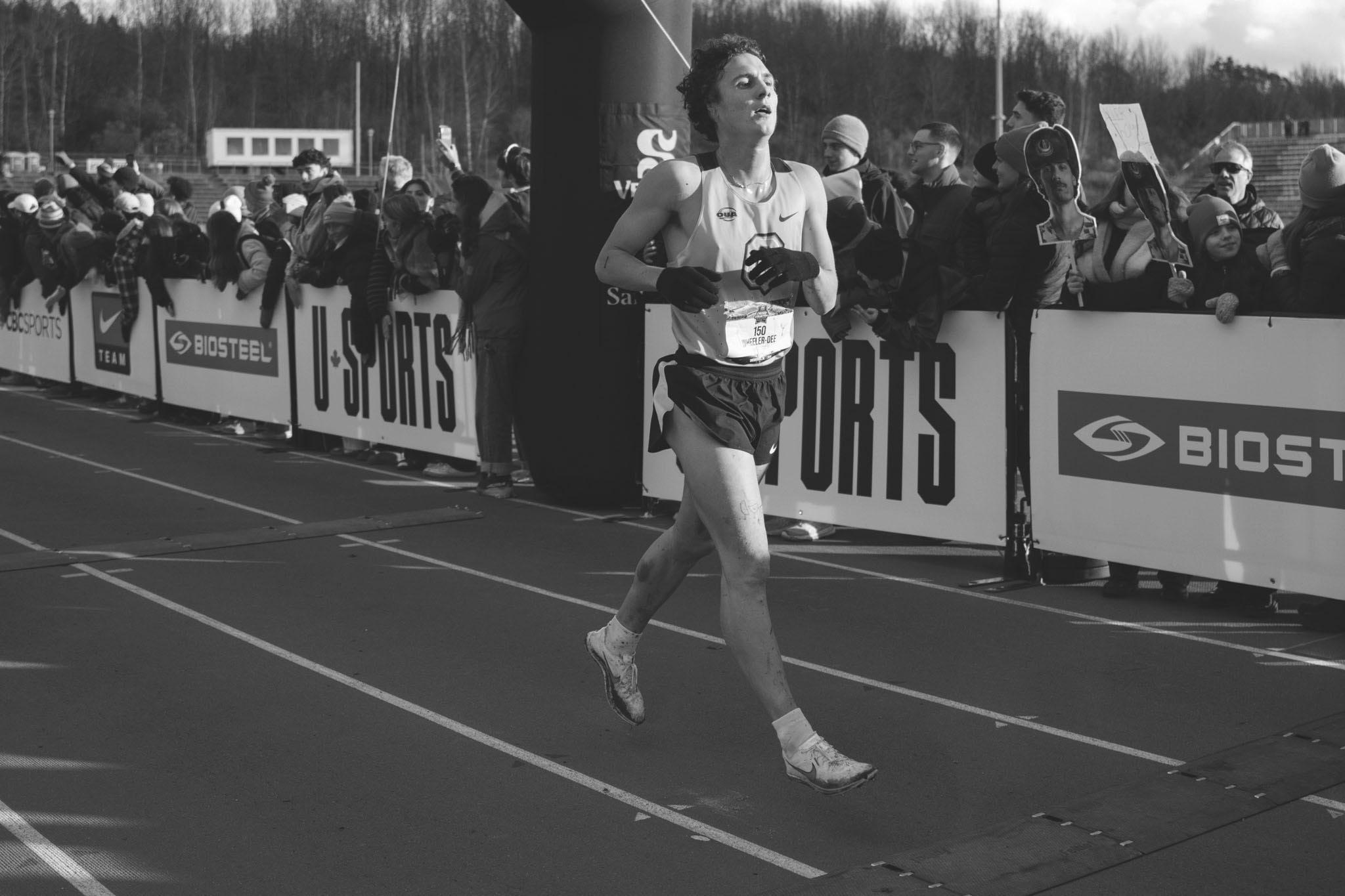
praised what he described as a tight-knit Gaels group, saying, “Our 10th guy pushes the 9th, who pushes the 8th, and it trickles all the way to the top.”
The women’s team added to Queen’s pride, capping off a season where they continued to break expectations. They were just two weeks removed from a performance that shocked the OUA on Oct. 25, when they won gold at the provincial event. Before OUAs, Queen’s was ranked 8th nationally in polls among coaches.
The Gaels turned heads at OUAs, but at nationals, they proved it wasn’t a fluke. Once again, despite being ranked fourth in the OUA by coaches earlier in the year, Queen’s took the top spot among all competitors from Ontario. The team finished fourth overall, 36 points shy of third-place University of British Columbia.
The performance was highlighted by a breakout race from Caleigh Pribaz, Kin ’26, whose time of 00:29:20 earned her 21st place to lead the Gaels.
Women’s rowing wins first gold at nationals since 2007, men finish fifth
Teixeria named Athlete of the Year thanks to stellar performance
Taahaa Lone Senior Sports Editor
This month, Queen’s added to its autumn of success, this time earning victory on the water.
From Nov. 1 to 2, the Queen’s women’s and men’s rowing programs travelled to Montreal, QC., to compete at the 2025 Canadian University Rowing Championship. The women were dominant, earning three gold medals and two silver medals to finish first overall. The men established
themselves as a force, too, earning a silver medal and a bronze medal to finish fifth overall.
The win for the women is Queen’s first at the event since 2007, and only its second since the competition’s inception in ’97. In the last 16 competitions, the women’s competition’s only been won by three schools: the University of Victoria, the University of British Columbia, and Western University.
This year, the women put themselves 19 points ahead
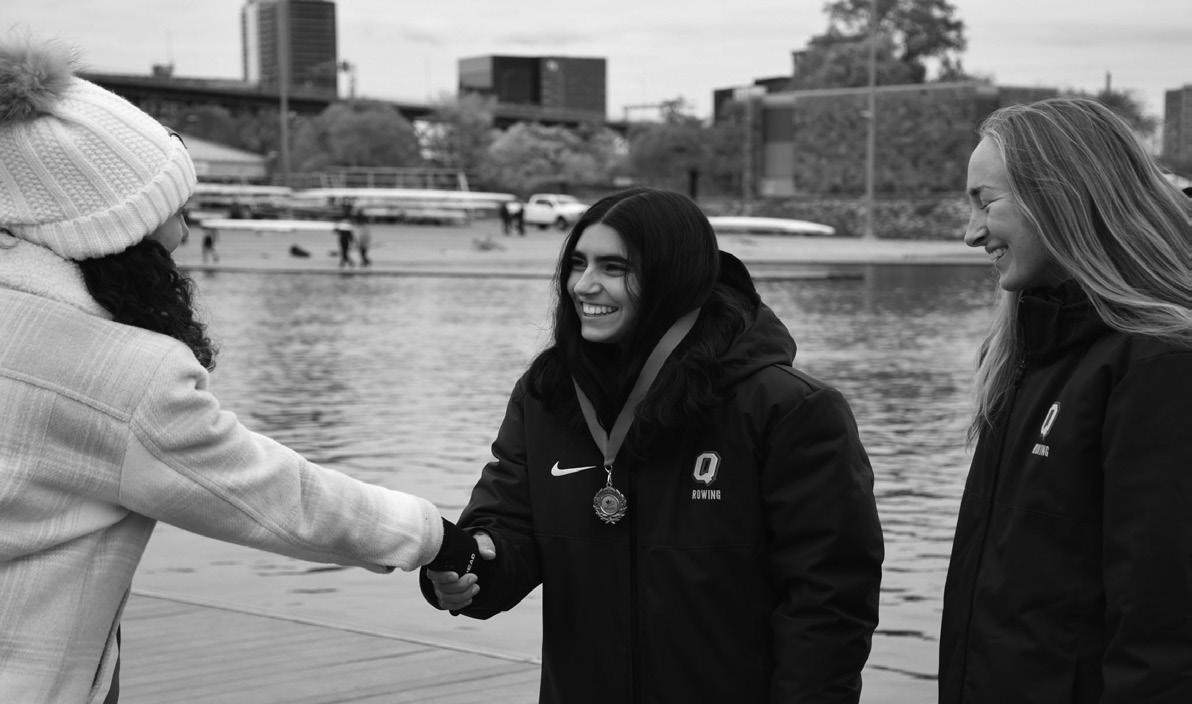
of Western in the overall competition. In the Lightweight 2x, Julia Teixeria, ArtSci ’28, and Gillian Jansen, ArtSci ’26, took home gold, finishing five seconds ahead of the runner-ups from Victoria. Just hours later, the duo came back for more, joining Isidora Ferguson, ArtSci ’26, Isabel Geiger, ArtSci ’27, and Nicole Schmidt, Nurs ’27, to win gold in the Lightweight 4+. Later that day, Teixeria raced one more time, clinching silver in the Lightweight 1x, finishing just three seconds behind Isabel Izquierdo-Bernier from l’Université de Montréal.
Teixeria’s performance earned her the honour of being the Canadian University Rowing Association’s Athlete of the Year, as she left the competition with two golds and a silver medal after a stellar season overall.
Her success came as no surprise to Queen’s rowing head coach Scott Feddery. “Julia is an absolutely dominant rower
Elizabeth Vroom, Sci ’26, capped off a remarkable season at 27th place, and freshman Madison McDermott, ArtSci ’29, ended a strong rookie season at 39th.
Hannah Goodjohn, Nurs ’26, finished 47th, and Jasmine Stokes, Nurs ’26, rounded out Queen’s top five at 55th place. Olivia Baggley, ArtSci ’27, and Rosalyn Barrett, HealthSci ’26, also put up formidable results, finishing 75th and 77th, respectively. It was another showcase of depth from the Gaels, who were the only top-five finishers without an individual in the top 20, but instead displayed an impressive performance as a group. McDermott—already honoured as OUA’s Rookie of the Year—was given a nod on the U Sports All-Rookie Team.
Wheeler-Dee praised his fellow Gaels’ journey this year. “What they did was incredible,” he said. “From the inside, we knew they were capable, but now everyone else can see it.”
Such a strong performance for both teams merited honours for Queen’s cross-country head
and has been for a number of years,” Feddery said in an interview with The Journal. He discussed the difficulties of competing in three events at the national stage, with such an effort requiring six races in three days.
“It’s tough to do,” he said, “But she was right away like, ‘I want to do all three. I’m up for it.’”
Notably, it’s the first time in program history that the Gaels won in the Women’s 8+, a feat that didn’t go unnoticed by Feddery and his team.
“I knew before the season started that we’d never won that event at nationals,” Feddery said.
“After our time trial on Saturday, I told the women they had a real opportunity to make history. Not to turn the screws tighter, but to make them aware.”
The women made history, but the coach also noted another plus of earning gold in the 8+. “What’s super cool is that everybody on the women’s side who raced won a gold medal,” Feddery said, noting that it means everyone on the team felt even more proud of their group’s triumph.
Feddery also credited the men, who earned silver at the Men’s Lightweight 2x and bronze at the Men’s Lightweight 4x, earning them a top-five
coach Mark Bomba, who was given the Fred Foot Award as U Sports Coach of the Year. The award adds to his trophy haul for the year, as he was also named OUA Coach of the Year.
Wheeler-Dee was enthusiastic when talking about his long-time Queen’s coach. “There’s so much credit that needs to go to Mark Bomba. He’s built a phenomenal program from the ground up.” He went on to discuss the immense preparation involved, saying Bomba has “a five-year plan every year,” crucial in the long-term success of his Gaels.
The performances capped off an incredible season for the cross-country teams, but it won’t be long until they’re back in action. The athletes are set to compete in the indoor distance track season, where the Gaels will compete starting in January. In the meantime, Wheeler-Dee is preparing for the Canadian Cross Country Championships, which will take place in London, ON., from Nov. 29 to 30.
finish at the national level.
“I’m quite proud of all the guys and how they raced,” Feddery said. “The men’s field is incredibly deep right now, but we’ve made real strides. My goal is for the guys to experience the same high the women got this year.”
At the event, Feddery was named the CURA’s Women’s Crew Coach of the Year, thanks to the dominant performances by his program. This comes after he was named Women’s Coach of the Year at the OUA level as well.
Despite the successes and honours, the coach remained humble and credited his team when talking about the awards. “I’m tremendously honoured, but an award like that is really a reflection of the team,” Feddery said. “I can’t do what I do without the other coaches around me. While I get the recognition here, they should get as much of this as I do.”
The powerhouse program now shifts to daily indoor training, as they look to maintain their status when the ice melts for the 2026 season. “The fun challenge now,” Feddery said, “is wanting to win next year more than everyone else wants to take us down.”
The U Sports Cross Country Championships took place on Nov. 8. PHOTO SUPPLIED BY MANUEL EZETA
Victory came thanks to three gold medals and two silver medals in six events.
PHOTO SUPPLIED BY MARKUS MULLER





HOROSCOPES



Horoscopes: Your chaotic week in the stars
Between midterms and caffeine, love could sneak in too THE PSYCHIC SCHOLAR
The semester’s in the middle of chaos; between essays, half-finished lattes, and unread messages, there’s a pulse of something sweet; connections are made in the middle of the mess. This week, love shows up where you least expect it: in shared playlists, eye contact, across the study hall, or a DM that finally gets answered.

Taurus (April 20-May 20)
Passion and love are powerful, but the universe moves at its own pace. Spread some kindness as the holidays approach; it might surprise you.

Libra (Sept. 23 – Oct. 22)
Your charm is magnetic, even when you’re stressed. Expect sparks around campus, a study buddy, a friend of a friend, or someone who gets your aesthetics.
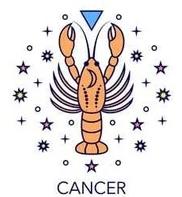
Cancer (June 21 – July 22)
The stars are bright in your new romance, but you and your partner may not see everything the same way. Instead of overthinking or staring at the lecture board, trust the flow of the relationship and pay attention to your professor.

Aries (March 21 – April 19)
Flash of Genius
ACROSS
1 Falls behind
5 A four door car
10 Band with hits like 'Electric Feel' or 'Kids'
14 Frozen Drink Brand
15 Got out of bed, say
16 Chocolate bar with bubbles
17 ____ Lisa, the famous painting
18 Try to tear
19 ________ Helens
20 **IN MY OPINION, A WORSE ALTERNATIVE TO NESTEAS (AND I DON'T MEAN FUZE)**
23 Cutting one might make you tear up
24 Affirmative vote
25 Cool ______ cucumber
28 City in southern France
32 Childbirth process (The American spelling though)
34 Line of work: abbr.
37 **SHE HAS LOTS OF ERAS***
40 Verizon bundle
42 Actress Knightley
43 GPS predictions
44 **WHAT TO DO DURING THE COMMERCIALS OF A TAPED SHOW**
47 trick ending
48 Marisa of 'My Cousin Vinny'
CROSSWORD BY BLAKE
Things have felt up in the air, Aries. You’ve been debating whether to spill your heart or keep it to yourself, unsure if it’ll end in a fight or something real. The stars say: go for it. If it’s love, it’s worth the risk.

49 "Yond Cassius has ___ and hungry look" from Shakespeare 51 Spanish Bear 52 ___ Fighters 55 Chop finely
Capricorn (Dec. 22 – Jan. 19)
You’re still riding the “Is having a boyfriend embarrassing?” wave and want nothing to do with men right now. Your focus is all on your career, so keep grinding those papers like Hamilton writing the Constitution. It’ll all pay off soon enough.
59 USEFUL SKILL FOR HANDLING AN EMERGENCY, OR A HINT TO 20-, 37-, AND 44ACROSS 64 Person, Place or Thing 66 Chevy SUV, or a famous Nevadan Lake
_____ about (approximately) 68 This crossword is an example of one that is 15x15 69 30- down, but plural
Running behind
Rice shaped pasta
Letter-shaped opening
A tennis one is won by 6 games, a volleyball one is won with 25 points
Dance under a bar
Squirrel's snack
Sprits in a lamp?
Summer or Winter
Dehli wrap
Guitarist 'Clapton'
Awesome, Slangily
Carne ______
Meshlike
GILL

Gemini (May 21 – June 20)
Papa's counterpart
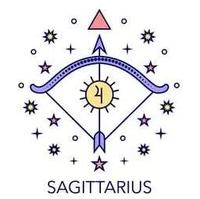
Sagittarius (Nov. 22 – Dec. 21)
This isn’t the time for a messy situationship, especially with deadlines piling up. If you want peace, use that block button and keep it that way. Some people aren’t projects, and “fixing them” isn’t part of your syllabus.

Virgo (Aug. 23 – Sept. 22)
You’re overthinking everything (again). But love doesn’t fit in a planner. Someone’s energy might interrupt your perfectly scheduled week, in the best possible way. Remember, you can’t proofread chemistry.

Classic poodle name
'Shucks!'
Inventor Tesla
Group of Eight
Gives the go ahead
Girls, in Spanish
Do, on a piano
White heron
Reverse
Take ______; admit defeat
Amazement
'We're ____ to see the wizard!'
Italian bye-byes
Magazine test to determine which 'kind of hot you are' for example
Spoken
Red steak option
Sault ___ Marie
You’re feeling all the feels while trying to hold it together. Someone close to you (or close on your screen) might reach out just when you need comfort. Let them in, not everything has to be self-soothing.




Prefix with -scope
Superlative suffix
WWF is one, for example
Bruins legend Bobby

Leo (July 23 – Aug. 22)
Leo, you’ve been pretending everything’s chill, but this month doesn’t seem to be letting you off that easily. Whether it’s the random situationships or the tenth assignment you have to finish. Put the apps down, step outside, and catch up with your family.



Pisces (Feb. 19 – March 20)
You keep saying it’s not the right time, but you know it is. While everyone’s stressing about exams and deadlines, you’re out here daydreaming about commitment. Exams are close, but all you can focus on is the person who feels like the “real thing”.

(Oct. 23 – Nov. 21)
Scorpio, your story is full of second chances. With winter coming, maybe it’s time to slide into that ex’s DMs, but don’t ghost your own needs while you’re at it.
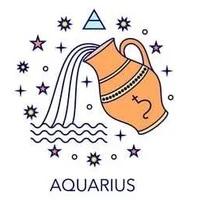
Aquarius (Jan. 20 – Feb 18)
You can’t undo the damage you’ve done to hearts that didn’t deserve to break. Your mid grades? That’s just karma catching up, your own downfall, delivered with a side of irony.

Scorpio
ARTS & CULTURE

Queen’s Players take audiences on a comedy odyssey in new show
‘Are We There Yet?’ opens at the Mansion for a hilarious fall run
Marijka Vernooy
Senior Arts & Culture Editor
The joy is in the journey at the Queen’s Players’ show.
On Nov. 12, Are We There Yet? The First (and last) Chungus Games ft. Vechicular Man’s Laughter celebrated its opening night. The crowd held about 25 people. Attendees leaned into the “audience participation” aspect of the show with gusto, dancing and clapping at all the right moments. Featuring a whacky cast of characters, the Players brought enough team spirit to liven The Mansion’s attic space for years to come.
The show was electric from the start. A full rock band and horns section burst to life at 8 p.m. sharp, with a rendition of “God Save the Queen,” a
Players tradition. Cast members emerged from backstage following a video introducing their characters, cleverly narrated as a scenic driving tour of Kingston. Characters ranging from “The Grinch” to a Diva Cup graced the stage, performing witty monologues to introduce their chosen roles.
My personal favourite was a spiel delivered by Travis Kelce about how his fiancé, Taylor Swift, recently enrolled him in remedial reading program Kumon.
The jokes didn’t stop there. Interspersed among choreographed skits involving an ill-fated road trip, characters performed solo covers of popular songs, creating a situation where it felt perfectly reasonable to hear Jim Halpert sing 5 Seconds of Summer’s
“She Looked So Perfect.” Cast member Lucas Nasu Nielsen, ArtSci ’26, plays Halpert. He explained in an interview with The Journal that the
character was one of several he auditioned with, which are later narrowed down by the show’s director, Reanna McIlveen, Sci ’26.
The road-trip premise was also determined ahead of time, giving actors time to craft coherent scenes with “sketch comedy vibes,” Nasu Nielsen said.
The plot can “kind of stand-alone if people are going to the bar and getting drinks or stepping out for a second. They’re still able to come in and keep up with what’s going on,” Nasu Nielsen explained.
Catering the show to the audience is part of what makes Players performances special.
“The environment of being in a bar sort of lends itself to something that’s a little more lighthearted and a little less serious,” Music Director Carson McNeice, CoEd ’28, said in an interview with The Journal.
“It’s a play you can jump at,” he added.
The Mourning Doves are a weekly treat for both jazz-lovers and new listeners at Musiikki
Cozy, live jazz is the perfect way to warm up on a rainy fall evening
Veer Bhalla
Assistant Arts & Culture Editor
Forget about the rest of the world as you immerse yourself in some soulful jazz at Musiikki on Monday nights.
Minutes from Springer Market Square, Musiikki Cafe & Whiskey Bar hosts
The Mourning Doves, a funky jazz trio every Monday from 8 to 11 p.m. For students looking to explore jazz, this is a great place to start exploring Kingston’s vibrant jazz scene. I’d never listened to live jazz, so on Nov. 10, I decided to check out Musiikii and get cozy with some tunes. Attending the performance proved to be
an excellent decision. The band, with their incredible chemistry, precise coordination, and pure love for music created a warm, intimate, and fun experience for everyone who came to watch.
The Mourning Doves is made up of four band members: lead singer Tyson Sullivan, pianist Spencer Evans, his son and bass player Oscar Evans, and drummer Justin Veri. On Nov. 10, Veri wasn’t present; Oscar Evans played the trumpet while guest performer Michael Broadhead covered for him on bass.
Having never experienced live jazz before, the performance was far more captivating than
expected. Although it took a few songs to adjust to the style, the energy and passion of the performers quickly swirled me into it. Their enjoyment on stage made the entire experience engaging and unforgettable for everyone in the audience.
“There’s a rich history of jazz in Kingston,” Spencer Evans said in an interview with The Journal. He added that although Kingston may have fewer jazz musicians than cities like Toronto, Montreal, or Ottawa, “we’re Kingston proud!”
The Mourning Doves are part of Kingston’s jazz tradition, created four years ago. “There was a [band performing at
As an audience member, what struck me most about the show was how Players were able to take such outlandish performances and rationalize them throughout the course of the story. The comedic chemistry between Diva Cup and Kelce’s characters made their slapstick Las Vegas wedding perfectly reasonable near the end of the show’s first act. That sentence might make little sense in any other context, but reviews of Players shows seem to work alongside the same logic as the shows themselves—anything goes.
But where anything can happen, everyone’s welcome. Cast members encouraged the audience to get up and dance during solo songs, and crew members took time to explain long-running Players traditions to attendees before the show started. My favourite was shouting, “Seamless!” every time a Player flubbed a line, making mistakes a shared,
comfortable experience.
Show-related traditions are “super fun and unique to Queen’s Players,” Stage Manager Emily Masson, ArtSci ’26, said in an interview with The Journal. She shared one special opening night tradition where alumni Players create a unique welcoming celebration for rookie members.
Masson smiled as she kept the specifics a secret, not “spoiling the element of surprise for [those] who join the club in the future.”
Those who attend Players in the future are in for a treat, experiencing an off-the-walls performance that gets everyone in on the joke.
A perfect blend of stellar live music, side-splitting comedy, and electric team chemstiry, Are We There Yet? will no doubt warm hearts and deepen laugh lines throughout its fall run.

Monday from 8-11 p.m.
a] Monday night jazz gig [at Musiikki] that both of us were part of,” Evans said. After that group disbanded, The Mourning Doves “picked up the pieces,” according to Evans. Support for the group has picked up pace among a diverse range of Kingstonians. The mixed audience, coming in and out to watch the performance, was filled with people old and young, couples and singles, students and locals;
all coming together to enjoy light, fun, engaging music. Sullivan’s ability to use his voice as an instrument, mixed with Evans’s use of the trumpet strongly captivated the audience’s attention, electrifying the intimate space of the concert.
Continued online at www.queensu.ca
The fall show runs from Nov. 12 to 22.
PHOTO BY MARIJKA VERNOOY
The trio performs every
PHOTO BY JASHAN DUA

Yorgos
Lanthimos’ ‘Bugonia’ is a masterclass in paranoia and absurdity
The Greek auteur delivers a darkly hilarious sci-fi satire
Daniel Gill
Assistant Arts & Culture Editor
One new sci-fi thriller’s as funny as it’s horrifying, taking audiences on a slow descent into paranoia.
Yorgos Lanthimos’ newest film Bugonia (2025) is a riveting, biting satire that pushes paranoia and absurdity to their limits. The director behind recent hits Poor Things (2023) and Kinds of Kindness (2024) delivers another masterclass in discomfort, part hostage thriller, part sci-fi allegory, and entirely unnerving.
The film follows Michelle Fuller (Emma Stone), the icy CEO of a pharmaceutical giant, who’s kidnapped by Teddy (Jesse Plemons), a delusional beekeeper convinced she’s an alien plotting to destroy humanity. Assisted by his naive cousin Don (Aidan Delbis),
Teddy imprisons Michelle in his basement to “interrogate” her about her supposed otherworldly motives.
As the ordeal unfolds, the lines between fact and fiction, and victim and captor, begin to blur. Eventually, neither the characters nor the audience can tell what’s real.
Stone delivers another stellar performance for Lanthimos, portraying Michelle as both monstrous and magnetic. Her sharp, unflinching delivery captures the cold detachment of someone who is used to being in control, even as that power is stripped away. Plemons is her perfect foil: erratic, twitchy, and shockingly sincere. Teddy’s a man with his heart in the right place utterly consumed by conspiracy and paranoia, something made terrifying because it truly feels like he believes every word he says.
Cinematographer Robbie Ryan, Lanthimos’ longtime collaborator, shoots the film with his trademark mix of precision and unease. Wide-angle shots
make every room feel too big, while sterile colour palettes evoke both corporate detachment and domestic dread. The result’s a visual world that’s both suffocating and eerily beautiful.
Beneath its absurd humour and escalating tension, Bugonia grapples with strikingly topical themes: the viral spread of misinformation, the seductive pull of conspiracy thinking, and the frightening rise in power of tech and pharmaceutical CEOs. Lanthimos captures the way paranoia can spread in the information age, turning fear into ideology and control into obsession.
The film’s tone oscillates between bleak and hilarious. Lanthimos’ signature deadpan humour surfaces in awkward silences, absurd dialogue, and the horrifying mundanity Teddy explains his outlandish theories with.
Continued online at www.queensjournal.ca
‘Fungi to Flowers’ transForms the tett Centre into a textile garden
Kingston fibre artists merge floral and fungal worlds through fabric
Daniel Gill
Assistant Arts & Culture Editor
The worlds of art, fabric, and nature intertwine at the Tett Centre for Creativity and Learning in one new exhibit.
Running from Nov. 8 to 16 at the Tett, Fungi to Flowers brings together Kingston fibre artists Linda Coulter and Phillida Hargreaves for a joint exhibition celebrating texture and nature.
The show pairs two distinct but complementary series: Coulter’s Promise of Spring, a collection blooming with floral forms and vibrant energy, and Hargreaves’s fungi-inspired works exploring the beauty of decay. Together, their pieces form a conversation about growth, transformation, and artistry that emerges from the natural world.
Walking into the space, viewers are immediately presented with dozens of works adorning the gallery walls. What might look like paintings
at first are revealed to be intricately crafted textile depictions of flora, fungi, and lichen upon further inspection. While the majority of the space is decorated with delicately crafted and colourful wall-mounted works on canvas, several sculptural pieces are featured in the exhibition as well.
Coulter’s pieces Upcycled men’s blue silk ties bowl and Upcycled men’s red wool ties bowl, for example, made entirely from old neckties, are visually striking and conceptually resonant. Hargreaves’s Spore Packages are organic and colourful sculptures hanging from the ceiling, which feel almost alive. Both pieces punctuate the exhibition by adding another dimension to the experience, making it truly feel like you are walking through a magic garden come to life in textile form.
For Coulter, Fungi to Flowers marks another step in a lifelong relationship with fabric.
Continued online at www.queensjournal.ca
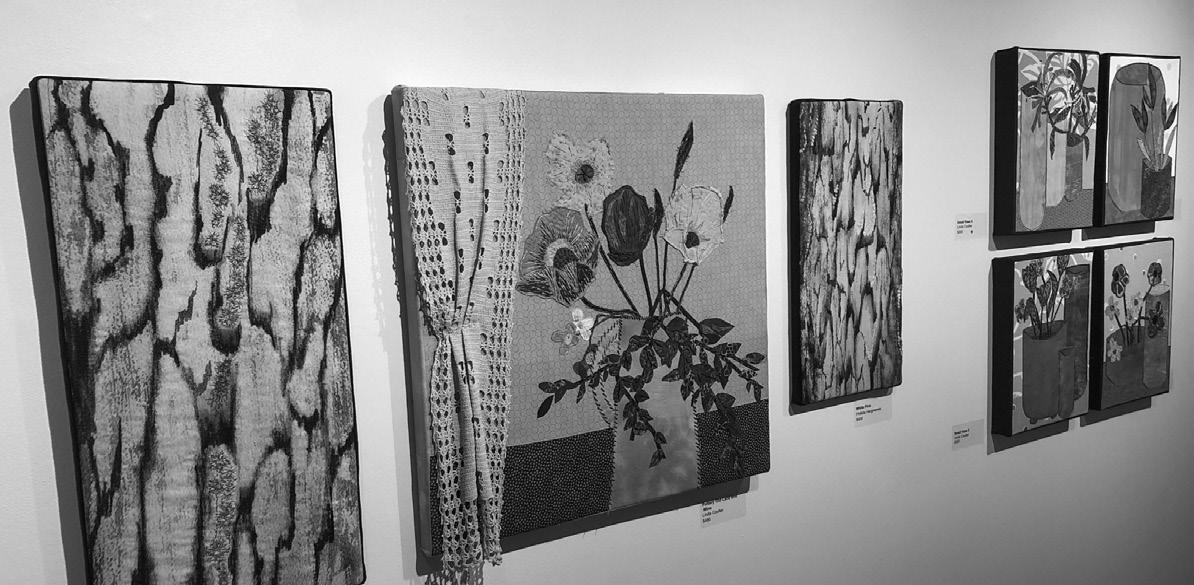
The ARC’s south wall has a new look
New mural ‘We/Nous’ highlights diverse cultural identities at Queen’s
Marijka Vernooy
Senior Arts and & Culture Editor
As winter quickly approaches and Queen’s colours fade into November, campus got a fresh pop of colour last month.
The exterior south-facing wall of the Queen’s Athletics and Recreation Centre (ARC) now features a new mural from Montreal-based artist Anna Jane McIntyre. The piece, We/Nous, displays colourful figures from different cultural traditions alongside 2SLGBTQ+ pride flags, and was installed on Oct. 27.
The project “envisions a future rooted in celebration, healing, resilience, cultural richness, and optimism,” the University stated in an article by the Gazette We/Nous was commissioned through the Advocacy Coalition Mural Project, which is no longer active, Queen’s said in a statement to The Journal The project also involved the Office of the Principal and Vice-Chancellor and the student-led Queen’s University Advocacy Coalition, according
to the Gazette. For their first large project with Queen’s McIntyre was “absolutely thrilled” to see We/Nous installed, they wrote in a statement to The Journal.
The mural’s design is “open to interpretation,” they said.
“I don’t really work in binary or absolute meanings,
as I prefer that people look at the artworks and come up with their own ideas,” McIntyre wrote.
Many different designs and figures are represented in the work, including Robert Sutherland, ArtSci ’52, a lawyer, Queen’s graduate, and the first Black graduate at a Canadian university. We/Nous also features McIntyre’s paternal grandmother, Thelma Paul, students from the Queen’s University Advocacy Coalition,
friends and collaborators of McIntyre, and the artist’s own designs.
Elements of the mural address “the specific wishes of the students to see a diverse and well-populated composition that was centered on representing people,” McIntyre wrote.
We/Nous is eye-catching even from a distance, adding detail to a campus space with plenty of foot traffic.
For some students, this has
a daily impact. “As someone who walks through the ARC every day, public art like this really improves the student experience,” Rachel Heaney, ArtSci ’26, said in an interview with The Journal. “I’m glad to see Queen’s beautifying campus while making space for artists of all backgrounds.”
Continued online at www.queensjournal.ca

The film released in theatres Oct. 31.
GRAPHIC BY ARDEN MASON-OURIQUE
The mural began installation Oct. 27.
PHOTO BY JASHAN DUA
The exhibit runs Nov. 8 to 16.
PHOTO BY DANIEL GILL
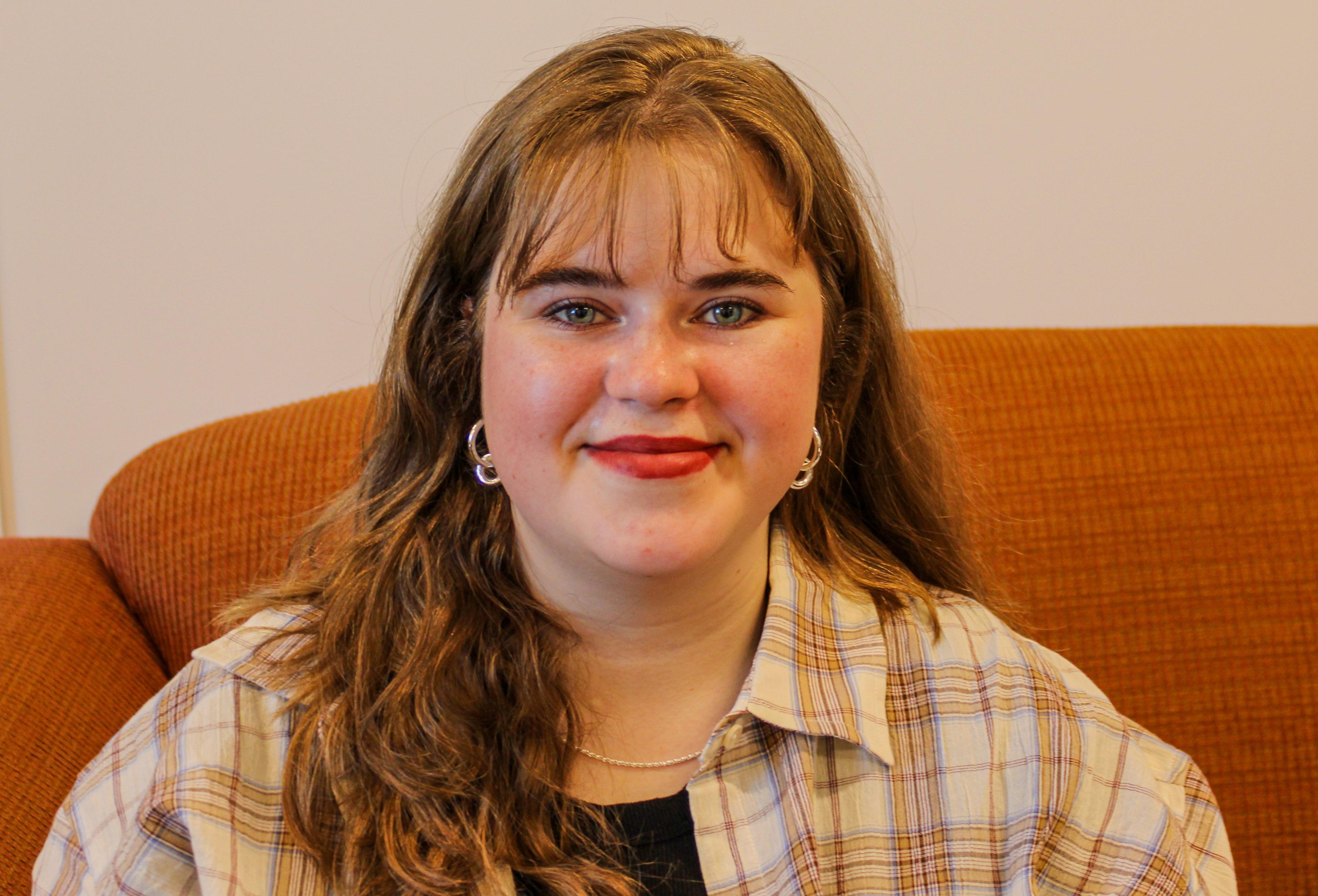
University isn’t a competition, even if it feels like one
Sometimes it takes getting lost to realize your life isn’t meant to match anyone else’s
Madeleine Hamilton Copy Editor
Most people say university changes you—but no one talks about how lost you can feel when it doesn’t go the way it’s “supposed” to.
University’s painted as a time of transformation, a new lifestyle, new friends, new you. But that pressure to change can feel suffocating. You’re told to shed your high school self and emerge as an adult: party, drink, join clubs, ace your classes, meet lifelong friends, maybe even future partners. It’s supposed to be the time of your life.
As the saying goes, “comparison is the thief of joy,” and it certainly stole mine.
“As the saying goes, “comparison is the thief of joy,” and it certainly stole mine.
I don’t have any friends at Queen’s and can count on one hand how many times I’ve gone out drinking. I’ve been in the same club since my first year, but I haven’t attended
a meeting since I’m always in-class or at work. I worry about being seen as a loner, but most days I’d rather be alone in my room than make small talk in the kitchen.
I went from honour roll in high school with three years of Advanced Placement English under my belt to failing my second-year English course. When I asked for extra credit, my professor refused, as it was clear I’d waited too long. I cried, while telling my mom. As if I was the only person to ever fail a university class.
By the end of my third year, I realized I’d fallen into a cycle of constant negative comparisons and consistently measuring my life against others and always coming up short.
“I realized I’d fallen into a cycle of constant negative comparisons and consistently measuring my life against others and always coming up short.
It was draining my mental health and pushing me further into isolation. So, I decided to hit pause. I left Kingston for the summer, traded paid hours for time with family, and hoped that a change of scenery would help me reset.
Even though I’d planned to reconnect with the people I
love, life had other plans. Whether we were bickering over petty arguments or our work schedules didn’t line up, I found myself falling back into the habit of seeking some sort of standard to follow, and being upset that I wasn’t meeting it.
“I was starting to get really tired of repeating this ridiculous habit when I was aware that it wasn’t fair to myself.
I was starting to get really tired of repeating this ridiculous habit when I was aware that it wasn’t fair to myself. I’d finally had enough.
As August ended, I began stuffing the last four months of my life into a suitcase to return back to Kingston. I came to the realization that I was making my life worse the more I compared it to someone else’s.
Yes, my life wasn’t exactly what I wanted it to be, but I needed to accept that and take it for what it was. No one has the same life, and no one’s experiences are going to be the same as mine. It’s not fair to see the way someone else is living and set that as a standard for my own life.
Upon that thought, I began to do some more inner reflection. Instead of looking negatively at how I currently operate in life, maybe I should learn to not only accept it,
but also appreciate it. COVID-19 granted me the time to perfect making my bedroom into a sanctum of my own mind. I practiced that talent for the first time in Leonard Hall, and then in my current home. I’m not a hermit because I hate the world; I just really love being in my room. My bed is covered in my collection of Jellycats, my walls plastered in posters and postcards I’ve acquired while being at Queen’s, and there’s no better feeling than coming home and swapping jeans for pyjama pants and crawling into bed to relax.
“COVID-19 granted me the time to perfect making my bedroom into a sanctum of my own mind
I prefer wandering downtown and going to the mall by myself. I can walk around at my own pace and visit two stores, then go home if I really want to. And every other trait that I consider contributing to my shortcomings of having a “normal” university experience has helped me figure life out. This is my first time living, and it’s not going to be easy. And I can’t expect to control every part of my life perfectly.
I’m twenty-two now and will be turning twenty-three when I graduate. University will have taken up 17 per
cent of my twenty-three years of life, with that percentage only growing smaller as I grow older. There was life before it, and there will be life after it.
“I’m not defined by my university experience. I’m worth no more and no less because of what I did or didn’t do during my Bachelor’s.
I’m not defined by my university experience. I’m worth no more and no less because of what I did or didn’t do during my Bachelor’s. And neither are you.
Want to write a postscript? E-mail journal_postscript@ams.queensu.ca
A hard lesson learned by a fourth year. JOURNAL FILE PHOTO
